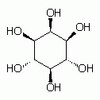Divergent signaling pathways cooperatively regulate TGFβ induction of cysteine-rich protein 2 in vascular smooth muscle cells.
Wu, ML; Chen, CH; Lin, YT; Jheng, YJ; Ho, YC; Yang, LT; Chen, L; Layne, MD; Yet, SF
Cell communication and signaling : CCS
12
22
2014
Show Abstract
Vascular smooth muscle cells (VSMCs) of the arterial wall play a critical role in the development of occlusive vascular diseases. Cysteine-rich protein 2 (CRP2) is a VSMC-expressed LIM-only protein, which functionally limits VSMC migration and protects against pathological vascular remodeling. The multifunctional cytokine TGFβ has been implicated to play a role in the pathogenesis of atherosclerosis through numerous downstream signaling pathways. We showed previously that TGFβ upregulates CRP2 expression; however, the detailed signaling mechanisms remain unclear.TGFβ treatment of VSMCs activated both Smad2/3 and ATF2 phosphorylation. Individually knocking down Smad2/3 or ATF2 pathways with siRNA impaired the TGFβ induction of CRP2, indicating that both contribute to CRP2 expression. Inhibiting TβRI kinase activity by SB431542 or TβRI knockdown abolished Smad2/3 phosphorylation but did not alter ATF2 phosphorylation, indicating while Smad2/3 phosphorylation was TβRI-dependent ATF2 phosphorylation was independent of TβRI. Inhibiting Src kinase activity by SU6656 suppressed TGFβ-induced RhoA and ATF2 activation but not Smad2 phosphorylation. Blocking ROCK activity, the major downstream target of RhoA, abolished ATF2 phosphorylation and CRP2 induction but not Smad2 phosphorylation. Furthermore, JNK inhibition with SP600125 reduced TGFβ-induced ATF2 (but not Smad2) phosphorylation and CRP2 protein expression while ROCK inhibition blocked JNK activation. These results indicate that downstream of TβRII, Src family kinase-RhoA-ROCK-JNK signaling pathway mediates TβRI-independent ATF2 activation. Promoter analysis revealed that the TGFβ induction of CRP2 was mediated through the CRE and SBE promoter elements that were located in close proximity.Our results demonstrate that two signaling pathways downstream of TGFβ converge on the CRE and SBE sites of the Csrp2 promoter to cooperatively control CRP2 induction in VSMCs, which represents a previously unrecognized mechanism of VSMC gene induction by TGFβ. | 24674138
 |
The zinc finger protein Zfr1p is localized specifically to conjugation junction and required for sexual development in Tetrahymena thermophila.
Xu, J; Tian, H; Wang, W; Liang, A
PloS one
7
e52799
2012
Show Abstract
Conjugation in Tetrahymena thermophila involves a developmental program consisting of three prezygotic nuclear divisions, pronuclear exchange and fusion, and postzygotic and exconjugant stages. The conjugation junction structure appears during the initiation of conjugation development, and disappears during the exconjugant stage. Many structural and functional proteins are involved in the establishment and maintenance of the junction structure in T. thermophila. In the present study, a zinc finger protein-encoding gene ZFR1 was found to be expressed specifically during conjugation and to localize specifically to the conjugation junction region. Truncated Zfr1p localized at the plasma membrane in ordered arrays and decorated Golgi apparatus located adjacent to basal body. The N-terminal zinc finger and C-terminal hydrophobic domains of Zfr1p were found to be required for its specific conjugation junction localization. Conjugation development of ZFR1 somatic knockout cells was aborted at the pronuclear exchange and fusion conjugation stages. Furthermore, Zfr1p was found to be important for conjugation junction stability during the prezygotic nuclear division stage. Taken together, our data reveal that Zfr1p is required for the stability and integrity of the conjugation junction structure and essential for the sexual life cycle of the Tetrahymena cell. | 23251712
 |
















